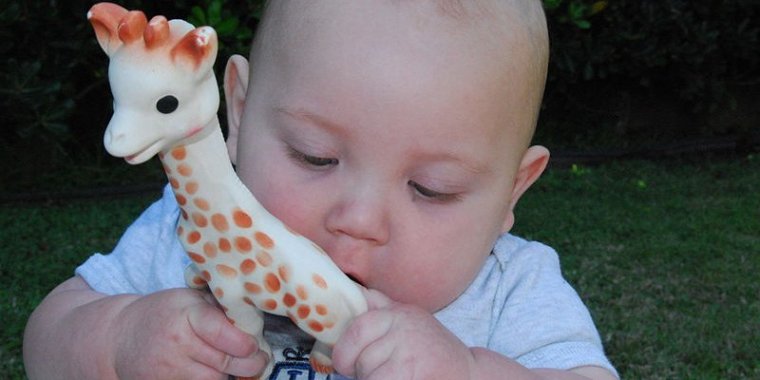| News / Science News |
Study: Popularity of Wildlife Can Harm Public's Perception
Researchers say the love youngsters have for wildlife may be clouding the public's mind about how endangered those creatures are.

Baby playing with Sophie the Giraffe. ![]()
The study in the journal PLOS Biology lists what the authors say are the world's 10 most charismatic animals: tigers, lions, elephants, giraffes, leopards, pandas, cheetahs, polar bears, gray wolves and gorillas.
The common depiction of these animals in cartoons and movies and as toys has led to what the authors call "virtual populations" — people believe the animals are not at risk of extinction in the wild because they appear to be everywhere.
The study uses the popular French baby toy "Sophie the Giraffe" as an example. Eight hundred thousand Sophie toys were sold in France in 2010 — more than eight times the number of real giraffes living in Africa.
The authors recommend that toy companies and others who use endangered species as trademarks donate some of their profits to wildlife conservation. (VOA)
YOU MAY ALSO LIKE





